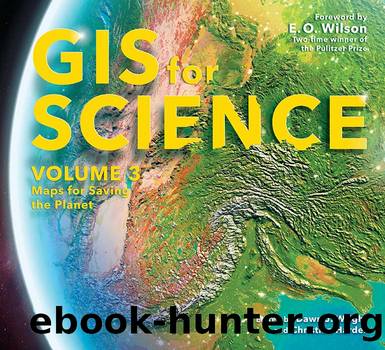GIS for Science, Volume 3 by Dawn J. Wright;Christian Harder; & Christian Harder

Author:Dawn J. Wright;Christian Harder; & Christian Harder [Wright, Dawn J. & Harder, Christian]
Language: eng
Format: epub
Tags: Geographic Information Systems, Remote Sensing, Environmental Conservation and Protection, Environmental Science
Publisher: Lightning Source Inc. (Tier 1)
Published: 2021-08-30T00:00:00+00:00
HISTORIC SCIENTIFIC SURVEYS
The general lack of exploration of the most remote high seasâcompared with waters closer to shoreâis evident in that one-third of all recorded species on the high seas is represented by a single record in the most comprehensive repository of global ocean biodiversity, the Ocean Biogeographic Information System. For the Salas y Gómez and Nazca Ridges, however, the Ocean Biogeographic Information System contains a relatively dense collection of records, including more than 14,000 occurrences of 930 species.4 This number includes numerous records of ecologically important species such as whales, sea turtles, sharks, and reef-building corals, which is quite unique for an area on the high seas.
These species records result from various scientific expeditions, most notably a series of Russian expeditions that surveyed the ridges from 1973 to 1987. The Chilean National Oceanographic Committee surveyed the high seas portions of the ridges in 1999 and 2016. And in 2019, the Japan Agency for Marine-Earth Science and Technology led an expedition that included Chilean and other partners.
These scientific explorations noted that the marine biodiversity of this region is composed of a high proportion of endemic species, or species that are not known to occur anywhere else on Earth. For many groups of organisms, nearly half of the species are endemic to the region, the highest level of marine endemism known anywhere on Earth. Furthermore, previous surveys noted that every seamount of these ridges appears to have a unique community composition, with few species shared between opposite ends of the ridges. This finding highlights the need to protect all the ridge features to safeguard representative biodiversity.
Download
This site does not store any files on its server. We only index and link to content provided by other sites. Please contact the content providers to delete copyright contents if any and email us, we'll remove relevant links or contents immediately.
Management Strategies for the Cloud Revolution: How Cloud Computing Is Transforming Business and Why You Can't Afford to Be Left Behind by Charles Babcock(4130)
Ego Is the Enemy by Ryan Holiday(3991)
Offensive Shellcode from Scratch by Rishalin Pillay(3667)
Exploring Deepfakes by Bryan Lyon and Matt Tora(3252)
Robo-Advisor with Python by Aki Ranin(3031)
Learning C# by Developing Games with Unity 2021 by Harrison Ferrone(2871)
Speed Up Your Python with Rust by Maxwell Flitton(2849)
Liar's Poker by Michael Lewis(2811)
Agile Security Operations by Hinne Hettema(2805)
Linux Command Line and Shell Scripting Techniques by Vedran Dakic and Jasmin Redzepagic(2804)
OPNsense Beginner to Professional by Julio Cesar Bueno de Camargo(2802)
Extreme DAX by Michiel Rozema & Henk Vlootman(2790)
Essential Cryptography for JavaScript Developers by Alessandro Segala(2740)
Elevating React Web Development with Gatsby by Samuel Larsen-Disney(2730)
Python for ArcGIS Pro by Silas Toms Bill Parker(2644)
AI-Powered Commerce by Andy Pandharikar & Frederik Bussler(2642)
Cryptography Algorithms by Massimo Bertaccini(2627)
Incident Response Techniques for Ransomware Attacks by Oleg Skulkin(2626)
Distributed .NET with Microsoft Orleans by Bhupesh Guptha Muthiyalu Suneel Kumar Kunani(2625)
